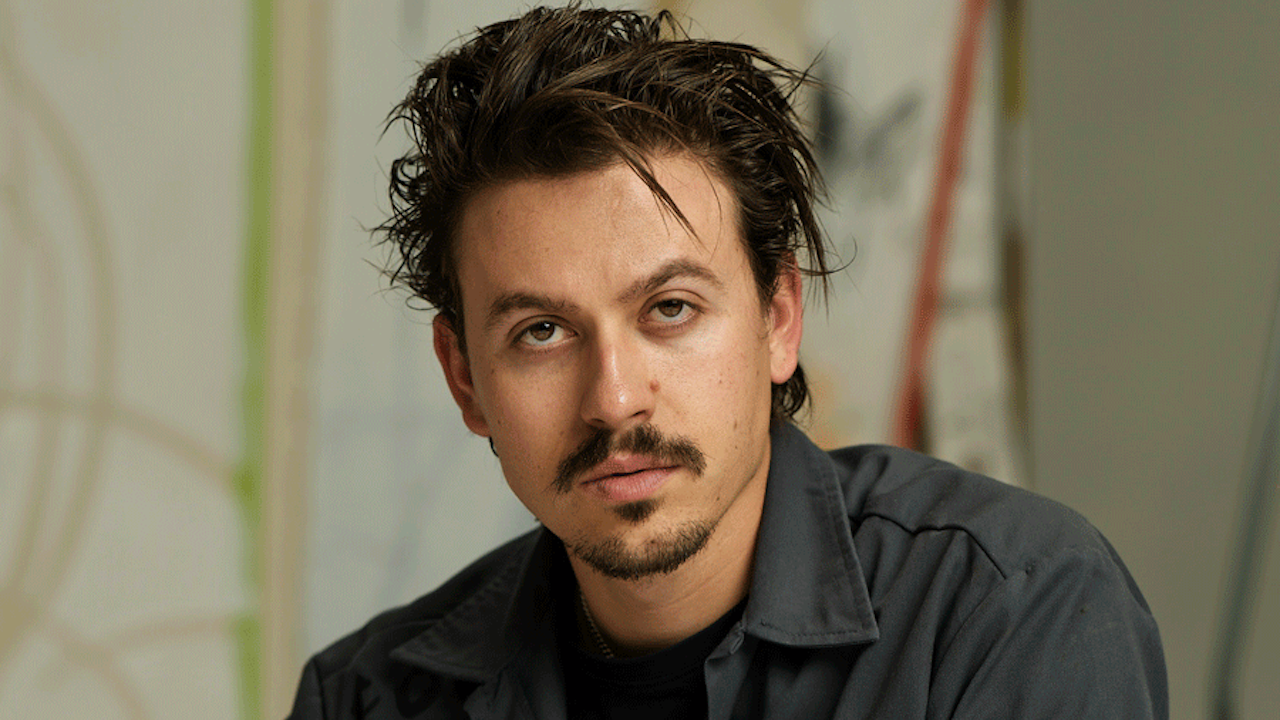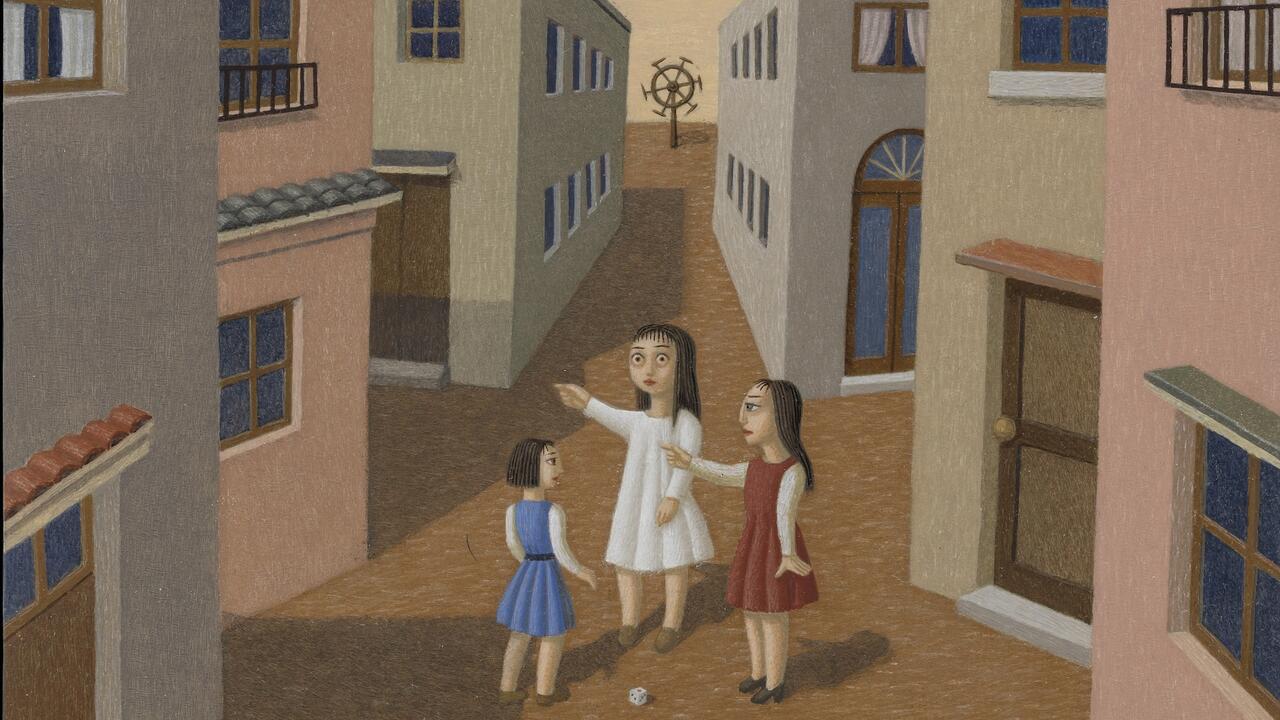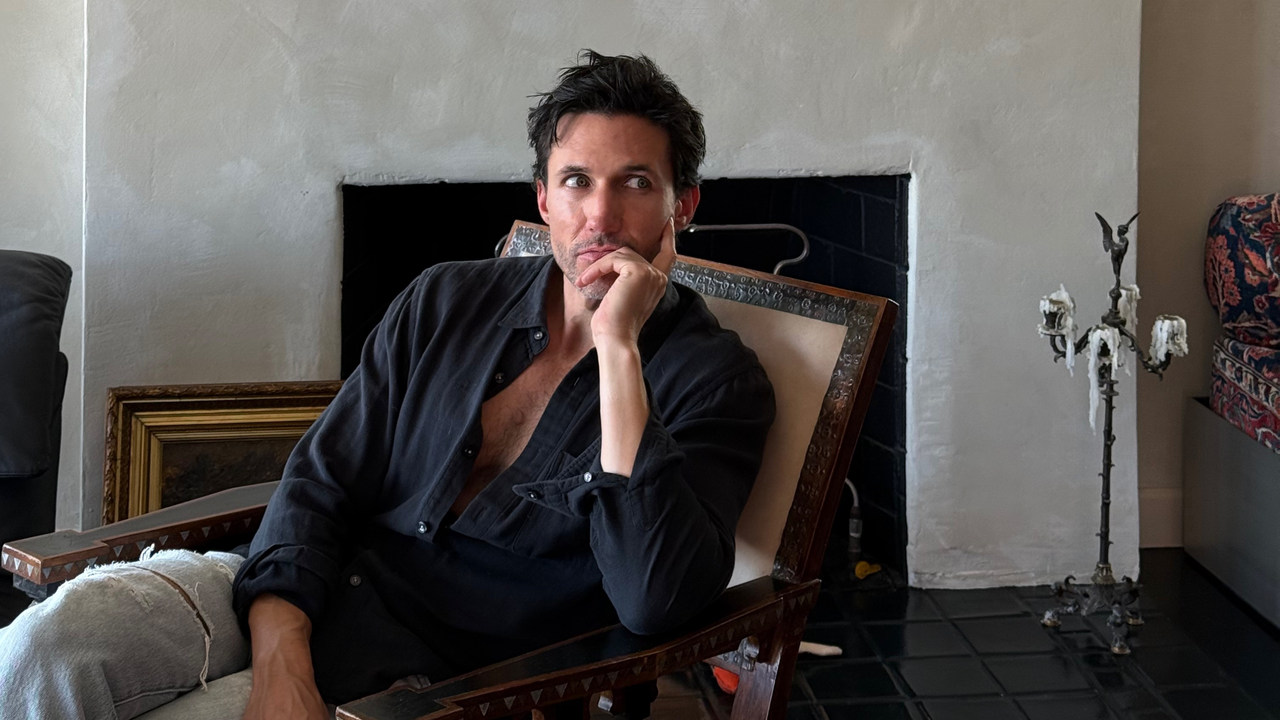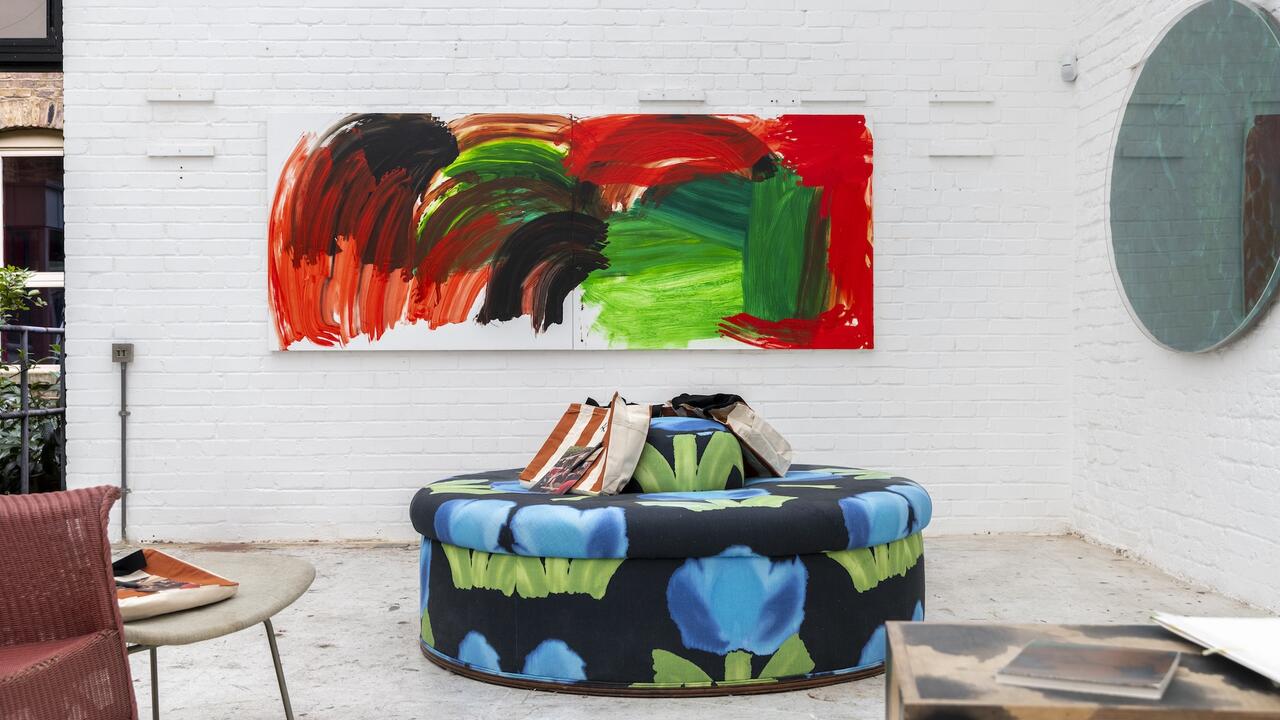Walk on by
Janet Cardiff
Janet Cardiff

To get a basic sense of what it's like to experience Janet Cardiff's 'walks', try putting your fingers in your ears. Whisper to yourself: 'I found your voice recorder in my suitcase ... This machine has become you now ... I want you to walk with me. I need to show you something.' These lines are from the opening of Cardiff's Villa Medici Walk (1998), in which Walkman-clad participants were led, in audio-guide style, over the grounds of the famous 16th-cent-ury Roman palace, now the home of the French Academy. Simultaneously unnerving and pacifying, the walk's narrative weaves in and out of addressing you (the listener) and someone else, a lost friend or lover whose own voice occasionally enters, as if from far away. The sound of birds chirping and pebbles crunching can be heard. Shreds of plot tug at you; characters address you, flee or morph together. The intimacy of the voices, one of which is presumably Cardiff's own, has the effect of making the listener feel complicit. You are in this together: 'turn left at the bench ... enter the bosco ...' You are drifting through an institution.
Cardiff has been producing these walks since 1991, but has worked with experiential aspects of sound and video installation since the mid-1980s, often in collaboration with the artist George Bures Miller. In a general sense, Cardiff's practice can be divided between 'perambulatory' works - her walks - and more traditionally 'fixed' installations such as To Touch (1993), The Dark Pool (1995), and, more recently, The Paradise Institute (2001), for which she and Miller received two major prizes at the 2001 Venice Biennale. These latter works typically take the form of sensory environments involving ambiguous, though elaborately staged uses of video, theatrical props, and audio narrative. In To Touch, for instance, audience members are parried with fragments of sound when their hands brush over a wooden table rigged with motion sensors. While many of these installations are more directly interactive than the walks, by fate or ingenuity it is the audio-tours which have developed into Cardiff's signature productions.
Thus far, however, the focus of attention has tended to be on the effects of intimacy, dread, wonder, or vertigo that audiences feel while listening and walking. Far less attention has been devoted to understanding these works formally and rhetorically, or to situating their production of effect within the actual political and social contexts against which feelings of intimacy and wonder take on meaning.
If Cardiff's walks provide audiences with a fictional or psychological supplement to the collections, libraries, back halls, gardens and side streets of sites often thought to be over-burdened by history and discourse, they do so by superimposing an essentially imaginary (private) space on top of the assumed (public) space of the institution. Not dissimilar to the diegetic unfoldings of a novel or a video game - absorbing, insinuating, a recipe of cues - this superimposition locates Cardiff's walks within a tradition of epideictic rhetoric in contemporary art. In classical accounts the epideictic is the rhetoric of display, exhibition and demonstration. Used in toasts, odes, love poetry and political declamations, it is resolutely present-tense, appealing to its audience in the moment, about the moment, and seeks to persuade through eloquence of presentation. A typical use of the epideictic would be Robert Smithson's magazine piece A Tour of the Monuments of Passaic, New Jersey (1967), a conceptual, quasi-imaginative invitation to the readers of Artforum to tour a real place rendered in words and photographs. A similar rhetorical mode can be found in works by Hans Haacke, Andrea Fraser and Fred Wilson - artists associated with institutional critique and critical site-specificity.
Cardiff's walks need to be distinguished from this more analytical or disputational mode of art practice, however. You don't 'do' them to be instructed or to participate in a critical legislation of institutional politics. What you are seeking is the experience itself, to be transported in the old-fashioned manner, by make-believe. To use Thomas de Quincey's famous distinction, the walks are an art of 'power' rather than 'knowledge'. They seek to persuade and conflate, to scramble perception - one curator has even likened them to making love. 1 It's not surprising that people get carried away when talking about them. They owe their power to a complex, if recognizably Postmodern, pastiching of style and method. Confabulations of context, mood and tone, they draw on motifs from a long range of ersatz aestheticism - Pre-Raphaelitism, Surrealism, noir and cyberpunk (all of which are themselves already pastiches). In Walk Münster (1997), for example, a city's streets become the host-site for a disjointed, inconclusive narrative of leaving, returning, and remembering love. The audio tour commences with the sound of water burbling in the foreground and cathedral bells peeling in the distance. Marking our descent into reverie, a little girl sings a jump-rope song 'made a mistake, kissed a snake, how many doctors did it take, 1, 2, 3, 4, 5, 6 ...' Time flies into the past with the clapping of a horse and carriage. An old man's gruff Germanic baritone pulls us in further, giving clues which may lead nowhere. With the whirring of bicycles and the daylight tweeting of sparrows, we are back in the present. We keep walking towards the Dom. We are directed towards tunnels, there is someone we should meet. History is all around us, enfolded in suggestion. The voice of a younger man whispers that we have been in his dreams, a cliché that triggers signifiers of memory. It is not a shock when Cardiff's murmurs that she is 'now' in Canada, back with her dog. Prepared for anything, we almost expect the last line when it comes: 'Please take the Walkman back to the museum. Press "stop" now.'
If Cardiff's audience negotiates its relationship to the 'institutional-real' through the scripted virtual space of the imagination, such an experience is, of course, technological as well. Nothing is felt or known in her walks except through the apparatuses and mediated stimuli of machines: stereo sound recording, digital sound-manipulation software, personal delivery systems such as the Walkman or the Handycam. Cardiff's technology is 'newer' as an art media than video and far more discreet than the Internet or graphics software. Especially in the case of the Walkman, Cardiff's technology is made for private, portable and individual consumer experience. The museum precedent for this technology is also consumerist. Invented in the late 1950s but first successfully used for the Met's King Tut exhibition in 1976, the audio guide has recently become a staple of exhibition design and education programming in most large museums. For a small charge audiences can now listen to Max Andersen unpack his O'Keeffes or hear George Plimpton explain the meaning of George Bellows' boxers. As a technology of display, audio guides are only one aspect of the box-office-driven transformation of museums away from their long-held role as civic and scholarly trusts. If museum-going in today's spectacle-friendly, audience-hungry institutions now parallels activities such as shopping or surfing the web - where experience alone is a stand-in for value - it has also become more technologically sophisticated, a programmed navigation of symbolic and architectural code. There is more art in more places (especially more video, more 'site-specific' installation and more large-scale sculpture), but also more bookshops, more cafés, more retail tie-ins to exhibitions, more celebrity speakers, more didactic enticements such as audio tours and video displays, more DJs and concerts, more cinema nights and more big-ticket architecture. To keep up with culture, museums have adopted culture's strategies.
Modernism, however, has taught us to expect more from artists than just keeping up with culture. Against this newly diversified field of the institution, Cardiff's converging of media, display rhetoric and fictional craftsmanship makes her walks exceedingly paradoxical works of art. Do her imaginary narratives disrupt the steady reconception of museums as subjective, adaptable spaces, or do they participate in, even benefit, such a reconception? Are they technologically progressive or simply optimistic? Are they best judged by the conventions of art or the innovations of mass culture? If the latter, are they as immersive as Times Square, as absorbing as Quake? Cardiff's walks may not really be responsible for - or interested in - addressing such questions, but they do force the issue of how we experience art.
Cardiff has produced walks for Biennales such as Venice (2001) and Istanbul (1999); for large curated exhibitions - San Francisco MoMA's '010101: Art in Technological Times' (2001) and NY MoMA's 'The Museum as Muse' (1999), for example; and for smaller, more intimate institutional settings such as the Villa Medici in Rome. This variety of locations would seem to offer the artist an occasion for building into her walks distinctions between different constructions of art experience. Wandering through a tight, thematized, and historically coherent exhibition is not the same as wandering through the caverns of a multi-national state sponsored two-year round up. The former is a 'monologic' experience, necessarily incorporating different kinds of work, but doing so with an already present rhetoric of display, comparison, and reflection. The latter is a 'heterologic' experience, not necessarily incorporating or promoting anything besides the diverse but mechanistic heterotopia of the art world itself.
It's not immediately clear that such distinctions are of interest to Cardiff. In terms of narrative and acoustic strategy, the Walk Münster, which took audiences 'out of the museum' and into surrounding streets, is not dissimilar to the walk produced for 'The Museum as Muse', which led participants on a quasi-ecstatic tour of MoMA's renowned collections. Given their highly subjective rendering of institutional spaces - Cardiff has called her locations 'Rorschach tests' - the walks position the audience as the ultimate arbiter of their site-specifity. But who does this benefit? This may be the hardest, but most crucial aspect of the work to judge. The meaning of anything built into a museum - a bookstore, a café, a sculpture - will reveal itself and change as the conditions and subtleties of experience change. On this fundamental level, all aspects of museums are 'relational' and 'interactive,' meaning only that they are available to be absorbed together. Rhetorics massaging rhetorics, Cardiff's walks function most successfully in an ambient, atmospheric field of open-ended consumption.













